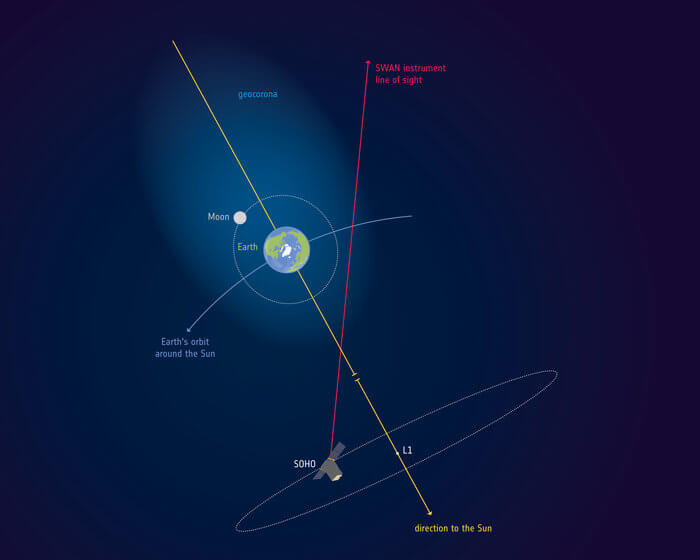The study, shows that the gaseous atmosphere enveloping the Earth reaches 630 thousand kilometers, which is 50 times larger than the diameter of our planet.
The moon flies through the atmosphere of the Earth. We didn’t know about it until we made observations made more than two decades ago by the SOHO spacecraft.
-Igor Balyukin from the Space Research Institute of the Russian Academy of Sciences, the lead author of the study
At the very edge of the atmosphere of our planet is a cloud of hydrogen atoms, called the geocorona. SWAN’s sensitive sensors monitored the hydrogen signature and accurately determined how far from the Earth it spreads.
The first telescope on the moon, installed by the astronauts of the Apollo-16 mission in 1972, captured a spectacular image of the geocorona surrounding Earth, glowing brightly in ultraviolet light. At that time, the astronauts did not yet know that they themselves were inside the gas envelope of the Earth.
The sun interacts with the hydrogen atoms through a certain wavelength of the ultraviolet – Lyman-alpha. Since this type of light is absorbed by the Earth’s atmosphere, it can only be observed from space, as was done by the SOHO Observatory from the first Lagrange point (L1), approximately 1.5 million kilometers from Earth to the Sun.
The new study showed a rather scant density of hydrogen atoms at a distance of 60 thousand kilometers above the Earth’s surface – about 70 atoms per cubic centimeter, and at a distance of the Moon this number drops to 0.2 atoms. And although on Earth we would call it a vacuum, the discovery made it possible to significantly expand the boundaries of our atmosphere.
The particles found pose no threat to space travelers in future manned missions in the Moon’s orbit. However, the Earth’s geo-corona can interfere with potential astronomical observations conducted in the vicinity of the satellite.
Earth's gaseous atmosphere, new study
Click To Tweet
The post Earth’s gaseous atmosphere, new study appeared first on Upcosmos.com.
